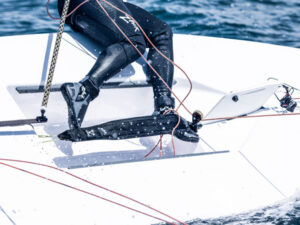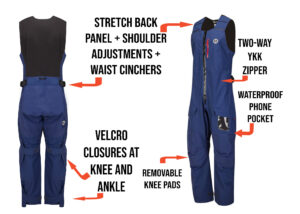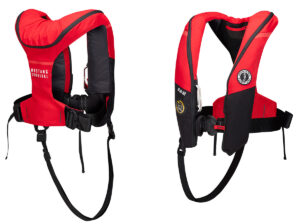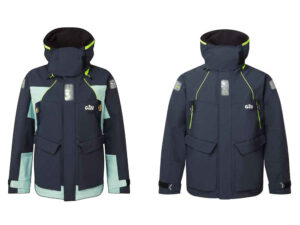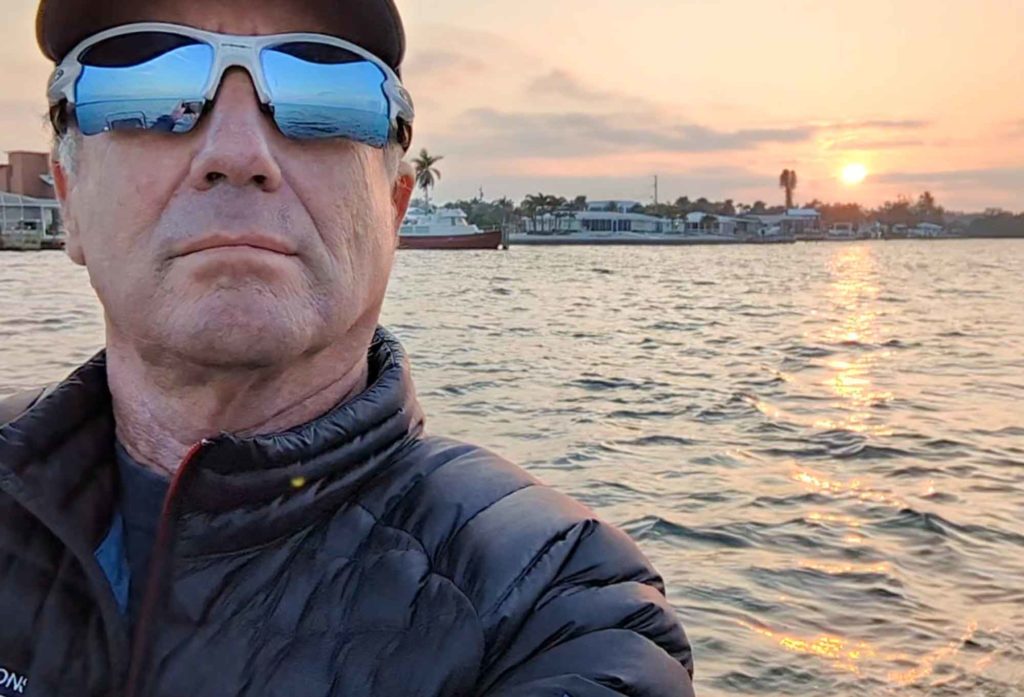
With my cursor hovering over “Complete Transaction,” I am unable to click. I’m undecided. Do I want brown, or gray lenses for my sunglasses? How about silver, black, or blue mirror? Just then, thankfully, my editor Dave Reed calls about something else and when I explain my dilemma, he suggests I reach out to Steve Rosenberg. Steve, he says, has legit lens technology credibility. So, I defer my purchase, close my browser and reach out to the Master of Shades.
I have known Rosenberg for a long time, from sailing 505s and when we were both on the US Sailing Team. He was in the Flying Dutchman, I in the Tornado. Back then, he was winning national championships in high-profile boats like the 505, Laser and Snipe, but he’s best known in sailing circles as the guy that knows everything about sunglasses, with a specialty in lens technology. Rosenberg’s career started when he was sponsored as a pro sailor by Oakley in the mid 80s. By the early 1990s, he was snapped up by Oakley where he quickly rose through the ranks to senior executive. There, he helped usher their transition from a “Niche Cool Guy” brand as he calls it, into the mass-market sports sunglass behemoth they are known as today.
Eventually, he saw a need for lens technology improvement, so he followed his passion and founded Kaenon to work on developing better polarized lens technology. Amongst us sailors and beyond, Kaenon became well known for its quality sunglasses. He eventually sold out and took a break. More recently, he and his son Jacob founded Tajima-Direct.com, a high-tech online polarized sunglasses and prescription lens company that brings his industry-leading polarized and prescription lens technology directly to the consumer. You can read all about it here. https://www.sailingworld.com/story/gear/how-to-save-your-sunglasses/
But enough about them. What about me? I still needed to choose my sunglasses, so I got to work picking Rosenberg’s brain. From him, I was naively looking for a few key selection tips. But like all those that know their craft well, he tactfully led me down a more thoughtful path. “Everyone is different, sees things differently, and has different needs and tolerances, so there really is not one right answer, but with knowledge, you will be able to make the right decision that fits your unique needs,” he tells me.
The knowledge path he brought me down started with lens material. Plastics like polycarbonate, CR-39, Nylon, and glass each has its own set of challenges, such as being too easily scratched, heavy, have polarization efficiency issues, and/or shatter and so on. He told me that no materials or manufacturing process at that time checked all the boxes, so he decided to base his lens businesses on Urethane.
“When fabricated correctly, it’s the first non-comprising polarized lens material featuring the superior optical clarity of glass, combined with hi-mass impact resistance and extremely light weight,” he says. Lens material is a brand choice, not typically a model choice within a brand, so you may have to dig deep to find which lens material a sunglass manufacturer uses, but it’s worth the search. It’s not the whole picture because manufacturing any lens is not easy, so it’s more than just the material that counts, but it’s a start.
Even before talking to Rosenberg, one of the few things I knew for sure was that I wanted my lenses polarized. Light waves are naturally oriented in many directions, but the reflected light waves we see as glare off the water are horizontal. Good polarization blocks those horizontal waves removing the glare. I can read the water and surface texture so much better without the glare and I find glare tiring on my eyes and brain. “Even on a cloudy day where you would not think there would be much glare,” Steve assured me, “you will be able to see more contrast with polarized lenses on flat light days.” Check that box and move on.
Another thing I am sure of is that I want wrap-around frames and lenses. The wrap-around style protects the side of my eyes from direct light yet allows for peripheral vision. Rosenberg added that we want an anti-reflective coating on the inside of the lenses to knock down indirect light bouncing off your skin reflecting onto the lenses then back into your eyes. I had not thought of that one.
At the heart of my inability to complete my order, however, was lens color and finish selection. It turns out that my difficulty in choosing was because these choices are personal. For help here, Rosenberg sent me to the Blog section of his Tajima-Direct.com website where I found case studies with top sailors. This was super helpful, here are some excerpts:
● America’s Cup champion and Olympic Gold Medalist Peter Burling wants one set of glasses, he wants to put them on when he is ready to go sailing without making any further choices. For this all-around color, he likes gray polarized lenses. His eyes are not overly sensitive, so he can get away with a slightly lighter tint allowing him to use one pair in a wide range of light conditions.
● Olympic Silver Medalist and multiple world champion Steve Benjamin could not be more the opposite, he wants a quiver of lenses. “My eyes have always been sensitive to sunlight, so I prefer a dark polarized lens most of the time, so I don’t squint and stay as relaxed as possible,” says Benjamin on the Blog. “On cloudy days I tend to prefer your Copper lenses that are dark with added contrast for when changing light goes flat, and in fog there is nothing better than the Yellow-Green low light lenses.”
● Olympian and world champ Dave Hughes prefers gray with blue mirror—an all-purpose lens. But he wants a low-light option too. “The ‘Brown 15 Green Mirror’ works really well for me in foggy and low-light conditionswhere I’m looking for heightened contrast and detail in flat light. I find I’ve been rotating in those lenses more and more lately.”
Intrigued by these case studies, I peppered Rosenberg for one more level of lens color understanding. “Our gray is neutral and natural. If you are going to get just one set, this is it,” he suggests. “Copper is great for those that want the most contrast,” he continues, “but some find that too much, that’s where brown comes in, and yellow-green is great for low light, like in fog, or overcast.”
In case you were wondering about the numbers in some of those case studies. Like the ‘15’ in ‘Brown 15’, it is the measured percentage of visible light transmission (VLT) that passes through the lens. For example, ‘Brown 15’ is 15-percent transmitted (85 percent of visible light blocked). For sailors, the sweet spot, says Rosenberg, is 10 to 15 percent VLT. Eight-percent VLT and under is “what you need on Mount Everest.” You may prefer 10 percent VLT if your eyes are very light sensitive. Anything higher than 15 may be too bright except in lower light conditions.
Any mirrors reflect light, this is why you see mirrors used on the snow in bluebird conditions. “It’s my opinion that mirrors are beneficial to sailors on the water where light reflection can be intense off the water’s surface,” says Rosenberg. “The two work very well together on the water by reflecting light (mirror) and removing glare (polarization), creating a more comfortable view with less strain for the user.” A mirror coating will darken the lens. Black and blue mirror darkens by 2 percent, and the silver mirror by 4 percent. Black and silver are similar in that they won’t alter the base lens tint’s intention. Blue mirror “warms up the gray and adds a bit of contrast.”
That sounds good to me.
In the “no brainer” decision category, Rosenberg says to make sure the sunglasses lens you choose block harmful UVA, UVB and UVC rays. With technology today, any quality pair of sunglasses you get should do so, but it is important to your eye health, so it’s worth double checking. Wearing sunglasses first should be about overall eye protection and preserving long term eye health. The performance features we are talking about are all a bonus.
On the inside and outside of my sunglasses I want a hydrophobic (sheds water), oleophobic (sheds oil) and anti-scratch coatings. But even with all that, they won’t be indestructible. The best way to clean them is to give them a spray of fresh water after sailing. I like to wash them before sailing again with a mild non-abrasive soap and warm water to get body oils and sunscreen out of the surface’s tiny pores. On the water, I like to carry a few packets of lens wipes, but Rosenberg warns me that I better squirt my lens with my water bottle before wiping clean or I will just be grinding in salt and sand, the enemies of lens scratching. Besides longevity, the coatings should help make it so I can see well again with just fresh water, that’s convenient.
My original mission was to select sunglasses and now I feel armed to make that choice. First, I chose a manufacturer that uses Urethane for their lens material. I confirm they have the basics: UVA, UVB, and UVC protection, hydro(phobic)/oleophobic treatments, scratch-resistant coatings and rear-side anti-reflection. I do some reading to make sure they have a good reputation for a quality polarization and overall manufacturing process. I chose a wraparound frame that is light, allows for air flow, and grips my head well.
Now for the hardest part. I need to decide on how many pairs, what colors, and what finish. After some thought, I think my style will support two pairs, one all around and one for low light. The first and primary pair I expect to use most of the time, and even though I will have a second pair for low light, I still want them to support a wide range of light conditions. With that, I figured I can’t go wrong with a lighter gray lens and a blue mirror tint. The second I expect to use infrequently for low-light conditions, so I choose a yellow-green. The second pair I expect to use infrequently for low-light conditions, so I choose the Yellow-Green. Since I am nearsighted, I upload my prescription, then click. Done. Shades on the way.

